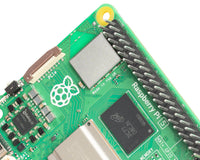Raspberry Pi Roundup - 7th September 2015
Martians
Exploring Mars is likely to be the most exciting scientific project of this century. Whenever it happens, it will capture the imagination of adults and children alike. There are just a few hurdles to overcome first! Like getting there… One of the issues explorers will face is the need for natural resources on the red planet, particularly water. Curiosity and the Phoenix Mars Lander indicated that there was water on Mars, frozen into the soil. The current thinking is that instead of transporting vast amounts of water to the planet (infeasible due to space and weight), a device will be used to retrieve the water that is already there.
The Mars Aqua Retrieval System (MARS) is a proof-of-concept for a water-extraction robot developed by the Singapore University of Technology and Design, and Australia’s Gilmour Space Technologies. The Raspberry Pi- and Arduino-powered robot has been designed to travel to a set of co-ordinates, microwave the soil and then collect the water vapour, condensing it back to liquid form. Its current rate of conversion is 4 grams per 4 minutes, so it’s unlikely to go to Mars in its present form, but as a proof-of-concept it works. It was built for a budget of $10,000 and is designed to work in the Martian atmosphere.
Walnut
Love Hulten is a Swedish designer and craftsman who loves to fuse together technology and more traditional materials. He’s just unveiled his latest two creations. The first is called the PE358 and is inspired by the Game Boy Advance.

It features all the expected buttons and cross-pad from the Nintendo machine and is based on a Raspberry Pi A+. It has a walnut case and folds down into an innocuous wooden block.

The second device is called the Battlecade and is a two-player version with proper joysticks and back-to-back 12″ LCD screens. It includes a compartment for the joysticks and power adapter and, again, folds up into a wooden block when not in use.
Really lovely old-fashioned craftsmanship and some great tech know-how.
Moist

Dave Hunt’s bathroom didn’t have extractor fans fitted when the house was originally built. He decided to overkill the problem by having a Raspberry Pi control some new fans he fitted. He uses AM2302 humidity sensors to detect the moisture levels in the air. The readings get fed back to a Raspberry Pi in his attic which then controls the extractor fans via relays. In the picture above you can see the perspex plate the electronics are fixed to for mounting above the bathroom ceiling. Read more here.






